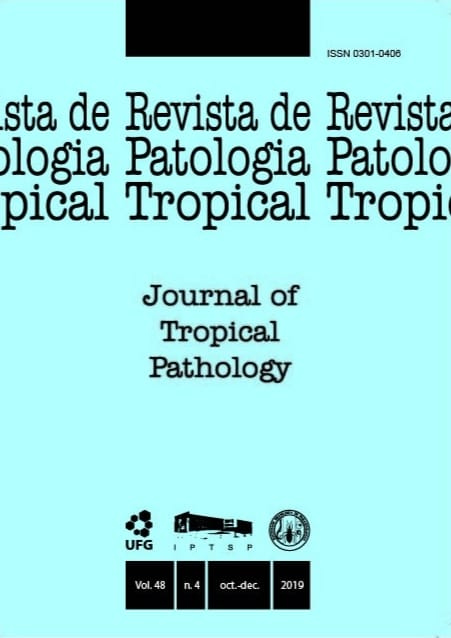ENTEROPARASITES, DEMOGRAPHIC PROFILE, SOCIOECONOMIC STATUS AND EDUCATION LEVEL IN THE RURAL POPULATION OF THE RECÔNCAVO OF BAHIA, BRAZIL
DOI:
https://doi.org/10.5216/rpt.v48i4.59036Resumo
Demographic and social studies, as well as economic and cultural factors in a community are important regarding public health. This study identified demographic, socioeconomic and cultural aspects correlated with intestinal parasites in the population of Santo Antônio de Jesus, Bahia-Brazil, from July to October 2015. 53 semi-structured questionnaires were applied to the rural population of the municipality with previous clarification on the purpose of the study.
There were questions related to the individual’s gender, family income and parental level of education. Laboratory parasitological analyzes were performed to investigate enteroparasites and produced the following results: 53.7% (n=58) were female; 62.8% (n=66) with monthly family income lower or equal to the minimum wage and 48% (n=48) of adults with incomplete basic education. The main enteroparasites found in this population were: Iodamoeba butschlii, Entamoeba histolytica/Entamoeba dispar complex, Giardia intestinalis, Entamoeba coli and Endolimax nana in addition to some geohelminths, such as hookworms and Enterobius vermicularis. The profile visualized can be understood as a risk factor for the development of certain parasitic infections that are intrinsically associated to the social and economic aspects of vulnerable populations.
KEY WORDS: Teenager; adult; child; parasitic diseases.
Downloads
Downloads
Publicado
Como Citar
Edição
Seção
Licença
The manuscript submission must be accompanied by a letter signed by all authors stating their full name and email address, confirming that the manuscript or part of it has not been published or is under consideration for publication elsewhere, and agreeing to transfer copyright in all media and formats for Journal of Tropical Pathology.

